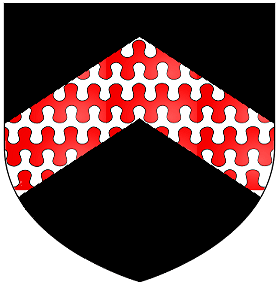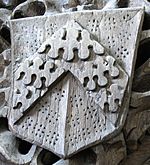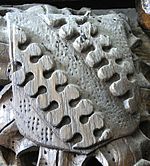William Hankford facts for kids
Sir William Hankford (born around 1350 – died 1423) was an important English lawyer and judge. He came from Annery in Devon. He became the Chief Justice of the King's Bench, which is a very high-ranking judge, and held this position from 1413 until his death in 1423.
Contents
Where He Came From
William Hankford's parents are not known, but his family was part of the gentry. This means they were from a good family with land. They got their name from a place called Hankford, near Bulkworthy in North Devon.
His Career as a Judge
William Hankford studied law at the Middle Temple, which is a famous place for lawyers. In 1388, he became a "serjeant-at-law," which was a special kind of lawyer. A year later, he became a "king's serjeant," meaning he worked directly for the king.
He worked for the Earl of Devon starting in 1384. He was also often asked by the king to be a judge and commissioner in southern England. In 1394, he traveled with King Richard II to Ireland. He even served as the Chief Justice of the King's Bench for Ireland from 1395 to 1396.
Loyalty During Political Changes
In 1397, King Richard II decided to deal with a group of noblemen called the Lords Appellant. These noblemen had taken some of the king's power years before. The next year, Hankford was one of the judges asked about a legal ruling from 1387. This ruling had said the Lords Appellant's actions were against the law and treason. Hankford agreed with the ruling and said he would have made the same decision.
On May 6, 1398, Hankford became a Justice of the Court of Common Pleas. This was a court that dealt with regular legal cases between people.
When King Henry IV became king in 1399, after taking the throne from Richard II, Hankford was made a Knight of the Bath. Even though he had been loyal to the old King Richard II, King Henry IV kept Hankford in his job. Soon after, he was made a Justice of the King's Bench. This court dealt with more serious cases and the king's business.
Hankford did very well in his job. When King Henry V became king in 1413, William Hankford was appointed the Chief Justice of the King's Bench. This was a very important and powerful position.
Family Life
By 1380, William Hankford was married to a woman named Cristina. She might have inherited the Annery estate in Devon. It's not completely clear if he got Annery through marriage or by buying it.
He had several children:
- Richard Hankford (died 1419): He was a Member of Parliament for Devon. Richard had a son named Sir Richard Hankford (born around 1397 – died 1431). This younger Richard became his grandfather's main heir when Sir William died.
- The younger Richard's daughter, Anne Hankford (born around 1431 – died 1485), and her husband, Thomas Butler, were the great-grandparents of Queen Anne Boleyn. This means Sir William Hankford was a distant ancestor of a famous queen!
- Jane Hankford (died 1448): She was married twice. Her second husband was Sir Robert Cary, who was also a Member of Parliament for Devon many times.
His Death and Burial
Sir William Hankford died on December 12, 1423, while he was still working as Chief Justice.
There is a strange local story about how he died. People say that Hankford told his forester (someone who looks after a forest) at his Annery estate to shoot anyone who entered his forest. Then, he supposedly went into the forest himself at night and was shot by the forester. This story was told by historians like Raphael Holinshed. Even in the 1600s, there was a tree stump called "Hankford's Oak" where people believed he was killed.
Whether this story is true or not, Hankford did write his will just two days before he died. He was buried in Monkleigh church. He had helped a lot with rebuilding parts of this church. His special monument, called an Easter Sepulchre, can still be seen in the Annery Chapel inside Monkleigh Church.
Images for kids






